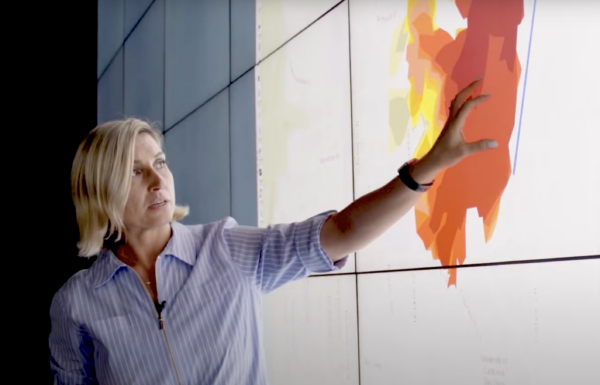It’s Wildfire Season, We Need Prop 4 Funds Now
- Marissa Christiansen & Alex Hall
- Sep 9
- 3 min read
Written by Marissa Christiansen and Alex Hall

Californians understand that the clock is ticking on the state’s worsening challenges with climate, wildfire, and water. Lawmakers have a golden opportunity to honor the public's will by immediately allocating critical voter approved funding for wildfire resilience and other climate priorities at stake in the current legislative session.
In the November 2024 election, just a couple of months before the devastating Los Angeles Fires, California voters overwhelmingly passed Proposition 4 – a $10 billion bond for climate, wildfire, and water resilience. As the fire season intensifies, the State Legislature is thankfully moving quickly to make Prop 4 funding urgently needed to address these vital priorities available. But they must get these efforts over the finish line now.
The State Legislature is on the verge of delivering for the voters by immediately appropriating Prop 4 funding. But with the legislative session ending in just days, inaction could mean the money voters approved – including for urgent wildfire resilience projects – may not be deployed before the next disaster strikes.
Since Prop 4’s passage, $180 million from the taxpayers’ $10 billion investment has been released by the legislature to prevent and mitigate wildfires – a modest sum compared to the estimated $117 billion in annual losses incurred from unmitigated catastrophic fire across the state.
The remaining Prop 4 appropriations due out this year, totaling at least $2.7 billion for the state – including an additional $440 million for wildfire and forest resilience – are still at risk of being delayed without a definite timeline for consideration. The good news is that a group of lawmakers is currently championing a funding agreement to get this critical money out the door.
The future well-being of California residents depends on getting Prop 4 funding for proactive wildfire risk reduction efforts and other climate priorities appropriated and available for urgent use now.
The January fires in LA left our region scarred with historic levels of decimation. As skies turned from orange to black, we held our collective breath as 100-mile-per-hour winds drove a devastating firestorm that immediately claimed over 30 lives, with an additional 440 deaths officially attributed to fire-related impacts, and caused an estimated $250 billion in damages – one of the costliest disasters in American history.
The wildfire crisis is quite literally at our doorstep. Solutions that help mitigate and build resilience in our landscapes and on our properties need more funding for swifter action. Even before the LA fires, the public understood that enough to pass Prop 4. Our hope remains that LA’s mass devastation keeps the critical need for immediate investment salient and that leadership will deliver the resources that communities across California need now.
Firefighters, scientists, and land managers agree: we must move from a reactive firefighting model to a proactive, long-term approach to wildfire management. But the right combination of strategies depends on the location. In shrublands like California’s chaparral, where fire already burns too frequently, the priority is preventing ignitions near communities. In conifer forests, reducing overgrown fuels and conducting carefully planned controlled burns enables firefighters to protect communities while also improving the health of the forest. And in cities and the wildland-urban interface, the aforementioned approaches must be paired with efforts to create defensible space, retrofit homes with fire-resistant material, and guide development with fire in mind.
According to the Blue Ribbon Commission on Climate Action and Fire Recovery, the recovery and adaptation required in the Los Angeles region alone should include substantial upgrades to our water and energy infrastructure. The Commission also recommends the establishment and continued funding of a regional Fire District. These are not novel ideas. They are proven, scalable strategies that save lives and landscapes with the right investments.
Be assured that State leadership can count on widespread, full-throated support for wildfire resilience investments, including from the newly launched Wildfire Solutions Coalition, a powerful alliance of organizations across the state led by groups such as The Nature Conservancy and Sierra Business Council. The Coalition advocates for substantial and consistent funds to break the cycle of California’s wildfire crisis. Their efforts highlight the widespread, cross-sector understanding that we cannot afford to wait on Prop 4 wildfire funding.
California has an opportunity to solidify its reputation as a leader in climate and wildfire investments. We are grateful to our elected officials for making this a top priority—now let's get over the finish line by releasing Prop 4 funds immediately.

Written by Marissa Christiansen
Marissa Christiansen is a born and raised Los Angeleno and Executive Director of the Climate & Wildfire Institute (CWI), a nonprofit organization dedicated to advancing solutions to the climate and wildfire crises.

Written by Alex Hall
Alex Hall is a Professor, Director of the Institute of the Environment and Sustainability, and Director of the Center for Climate Science at the University of California, Los Angeles (UCLA).


